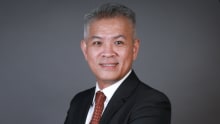HR Tech4.0: Reimagining HR for a Hybrid Workforce

HR leaders have been witness to unprecedented transformation, since the pandemic. The great attrition and the fierce ongoing war for talent shows that we are now in a talent economy, with talent being the only real differentiated currency between organisations.
As we move into 2022, HR Tech 4.0 will play centre stage in powering the talent economy and drive growth. The key task before people leaders is to define a strategy that will deliver hyper-personalised employee experience and enable their talent to deliver outcomes.
These talking points were discussed at ‘HR Tech 4.0: Driving the Talent Economy’ - the region’s biggest and most relevant HR virtual conference hosted by PeopleStrong and People Matters. Over a thousand business and HR leaders had signed up for this virtual event to hear from 14+ global thought leaders about how HR technology plays the centre stage in transforming employee experience and building people-centric workplaces for the modern talent economy.
The virtual event had a panel discussion on ‘Reimagining HR for a Hybrid Workforce’ that was moderated by Su-Yen Wong, Board Member of PeopleStrong, with panellists including Wong Hefen, Director, Development and Org Transformation of GovTech, Lynn Kok - Founder and CEO of Mula X, and Dr Surapit, Director at Thammasat Institute for Continuing Education & HR.
Here are some key takeaways from the panel discussion:
HR Tech 4.0: An opportunity for HR to take the lead
Organisations and leaders have been challenged to rethink and reinvent their business and working models in the last couple of years. The pandemic-led disruption has put existing leadership styles and productivity approaches in question. Among many other changes, the rise of the hybrid workforce is the most prominent.
As organisations aim to beat the great resignation, they embrace more flexible work options. But are they ready for it? Do they have enough resources and the right solutions to manage a hybrid workforce? How can HR teams support organisations to create a sustainable hybrid work model?
Su-Yen Wong, Board Member, PeopleStrong, said, “As technologies and other trends radically shift the way we work and transform businesses, it is an opportunity for HR leaders to take the lead and with agility to create sustainable value for the future of HR.”
HR Tech 4.0 requires HR leaders to be bold and courageous.
At the same time, they need to enable both businesses and employees to unlock their best potential and drive superior performance.
The good news is that emerging technologies are already empowering leaders to solve these challenges. For instance, as Dr Surapit, Director at Thammasat Institute for Continuing Education & HR, noted, HR leaders need to help the business make better decisions with real-time insights.
HR leaders today have many solutions to connect and support a distributed workforce. However, their greatest responsibility is to identify the diverse needs of the business, teams, and individuals. They then need to identify whether to build or buy solutions to address these challenges.
Equip the hybrid workforce to stay connected: #1 HR Priority
Today’s talent is not just looking for a job; they’re looking for connections and purpose. HR leaders have to redesign jobs, so they help individuals advance their goals towards their larger purpose. It is time to reflect on how you can make work more inspiring and purposeful.
But the job doesn’t end here.
In the hybrid model, with minimum face-to-face interaction and unclear boundaries, employees are often lost. A majority of the employees feel isolated and alone. Consistent communication is fundamental to ensure that purposeful work and meaningful impact is acknowledged and recognised.
Furthermore, the right tool and resources must be in place to ensure that employees can collaborate effectively with others and achieve their goals.
“We set up hot desking to encourage spontaneous interactions and 24/7 anonymous counselling to support people. We also launched a design thinking challenge to increase awareness of the needs of the hybrid workplace and co-design solutions together,” said Wong Hefen, Director, Development and Org Transformation, GovTech.
Integrated HR Tech solutions, learning management systems, and chatbots can help HR leaders support their hybrid workforce, but making use of these digital tools is not enough. HR leaders need a talent operating system to break the silos between departments and ensure smooth internal mobility in order to solve the pandemic-induced talent scarcity.
Enabling leaders to manage a diverse workforce: #2 HR Priority
Nudged by the pandemic, the leaders have been quick to adapt to the new ways of working and adopt digital solutions. However, there is still more to learn about managing a hybrid workforce.
The distributed workforce can lead to misalignment, and for leaders, it can be challenging to manage employees working in the office and those working remotely. How can leaders navigate these different talent priorities?
“Leaders must change how they manage people and work in a hybrid work model. It is important to connect with people, communicate transparently, create an environment where people feel safe to share their challenges and enable people by giving them the right resources and platforms,” said Lynn Kok, CEO, Mula X.
HR leaders have their tasks cut out to sensitise leaders about the new ways of working and train them to practise more compassion. In the hybrid model, leaders need to make more deliberate efforts to engage their employees, gain real-time feedback on the challenges they may be facing, and provide them with the support they need.
Careful and strategic integration of intent, technology, and efforts will help HR professionals and leaders create a sustainable hybrid model that drives productivity and performance.
Get access to all of the event recording sessions and hear from over 14 global thought leaders as they share about how HR technology plays the centre stage in transforming employee experience and building people-centric workplaces for the modern talent economy.
About PeopleStrong
PeopleStrong is Asia Pacific’s leading, and the most comprehensive Human Capital Management SaaS platform. PeopleStrong tech capabilities span across the employee lifecycle from hire to exit, including Human Capital Management, Payroll, Talent Acquisition & Management, and Collaboration.
PeopleStrong has simplified work life for over 500+ large enterprises across the emerging economies of Asia Pacific. Today, PeopleStrong empowers the lives of 2M+ employees with a mobile-first, AI & ML-powered talent operating system.
PeopleStrong is rated among the Top 5 in the Asia Pacific on Gartner Peer Insights and named Customers' Choice of HR Tech for 1000+ employee enterprises in the Gartner 'Voice of the Customer' Report.
For more information, visit www.peoplestrong.com
















